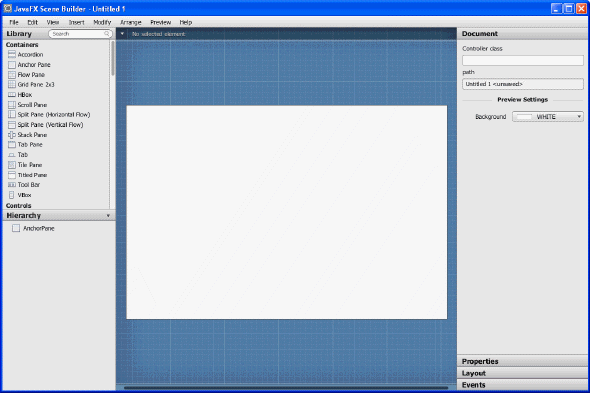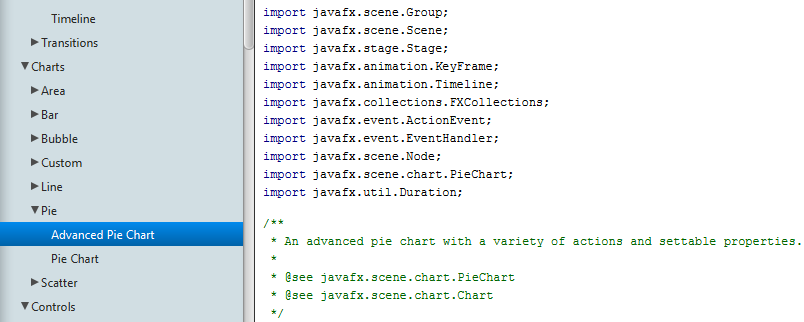FX Experience Has Gone Read-Only
I've been maintaining FX Experience for a really long time now, and I love hearing from people who enjoy my weekly links roundup. One thing I've noticed recently is that maintaining two sites (FX Experience and JonathanGiles.net) takes more time than ideal, and splits the audience up. Therefore, FX Experience will become read-only for new blog posts, but weekly posts will continue to be published on JonathanGiles.net. If you follow @FXExperience on Twitter, I suggest you also follow @JonathanGiles. This is not the end - just a consolidation of my online presence to make my life a little easier!
tl;dr: Follow me on Twitter and check for the latest news on JonathanGiles.net.
by Jonathan Giles | Apr 27, 2012 | News
JavaFX 2.1 was released yesterday right on schedule, along with the JavaFX 2.1 release notes, and a huge number of new articles on the JavaFX documentation site. From the Oracle press release, here are the key improvements in JavaFX 2.1 (aside from fixing a whole heap of bugs):
- Available for Windows and Mac OS X (with Linux support currently as preview release) (See also Henrik Stahl’s blog on Mac OS)
- Includes playback of MPEG-4 multimedia containing H.264/AVC video and AAC audio
- New WebView support for JavaScript to Java method calls, which enables JavaScript content to leverage Java for demanding operations
- Support for enhanced font rendering on LCD displays, including sub-pixel rendering
- Additional UI enhancements such as combo box, stacked chart, and application-wide menu bar
- Bundled with the Java 7u4 release
- Oracle has started the OpenJFX project in OpenJDK as part of the plan to open source JavaFX
Now – onward with JavaFX 2.2!

by Richard Bair | Apr 3, 2012 | FXML, JavaOne, News
 Hello from JavaOne Japan, where Jasper, Jonathan and I find ourselves seated in the opening keynote of the morning. One of the big announcements is the public beta of the JavaFX Scene Builder, our new tool for laying out and creating JavaFX content. The Scene Builder is the start of a more comprehensive RAD (rapid application development) tool for JavaFX, with drag-and-drop GUI building and eventually data binding.
Hello from JavaOne Japan, where Jasper, Jonathan and I find ourselves seated in the opening keynote of the morning. One of the big announcements is the public beta of the JavaFX Scene Builder, our new tool for laying out and creating JavaFX content. The Scene Builder is the start of a more comprehensive RAD (rapid application development) tool for JavaFX, with drag-and-drop GUI building and eventually data binding.
(more…)
by Richard Bair | Feb 17, 2012 | News
Yesterday our SQE (Software Quality Engineering) team pushed our JavaFX functional test suite, JemmyFX to OpenJFX! They also pushed some tests for Ensemble, our samples application. JemmyFX is based on Jemmy, a visual testing framework for Java used in NetBeans for many years. JemmyFX contains extensions which make it possible to write visual tests for JavaFX. Although JemmyFX is in the openjfx repo, you can download it and use it for writing visual tests for your own JavaFX applications.
For those folks who have been looking at contributing code to JavaFX, this is great news, because it means you can accelerate adoption of your specific features by also writing the tests necessary to ensure correctness, either as JUnit tests or now as functional tests using Jemmy. All you guys working on DatePicker, I’m looking at you 😉
by Jonathan Giles | Feb 15, 2012 | News
I’m very pleased to blog about the availability of more JavaFX source code being out in the wild. We’ve just put out the ‘javafx-ui-common’ project, which contains the vast majority of the JavaFX scenegraph API. You can check the code out from OpenJFX – it is in the rt repository. You can learn more about the javafx-ui-common project in a post by Richard Bair.
The javafx-ui-common project contains the following packages:
javafx.animation
javafx.application
javafx.geometry
javafx.scene
javafx.scene.effect
javafx.scene.image
javafx.scene.input
javafx.scene.layout
javafx.scene.paint
javafx.scene.shape
javafx.scene.text
javafx.scene.transform
javafx.stage
Once you’ve read that be sure to go and check it out! 🙂

by Jonathan Giles | Jan 30, 2012 | News, Tips n' Tricks

Phil Race has posted a blog post over at the JavaFX Blog on the addition of LCD text support in the latest JavaFX 2.1 developer preview.
LCD sub-pixel text has become a must-have for many Windows desktop users, who have become accustomed to its superior legibility and less blocky appearance at smaller point sizes over hinted black and white text, and being sharper than grey scale anti-aliased text at the same size.
Java SE has supported LCD subpixel text on AWT heavyweights and also on Swing components using Java 2D for many years. However up until now, JavaFX has supported only more Mac OS X-like grey scale smoothed text.
For the JavaFX 2.1 release we’ve added the ability to use Windows-style LCD sub-pixel rendering. All the JavaFX UI controls will be LCD-text enabled by default on Windows, as will “WebView”, the Webkit-based node for rendering Web content.
Applications can also opt-in to use LCD text on the low-level scenegraph “Text” node by a new API : Text.setFontSmoothingType(FontSmoothingType.LCD));
by Jonathan Giles | Jan 23, 2012 | News
I’ve been waiting for a while to say this, but we now have JavaFX 2.1 developer preview builds available for Windows, Mac and Linux. From here on out we’ll be putting out developer preview builds for all three platforms. Hopefully that pleases everyone who has been asking for Linux support 🙂




